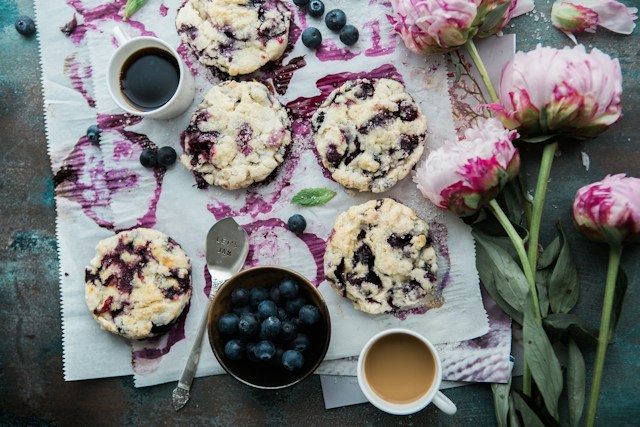Are you yearning to bite into a crumbly, buttery scone topped with some thick cream and sweet jam? A scone that’s subtly sweet, a perfect companion to your hot cup of tea. Well, you’re at the right place! We are about to unfold the secrets of preparing English High Tea scones, so flawlessly that they would make even the Queen proud.
The Essential Ingredients
Let’s start our journey with the most crucial part – the ingredients. No recipe can come to life without its core components, and the same holds true for our English High Tea scones. So, what do we need?
A lire aussi : What Are the Secrets to a Perfectly Smooth Spanish Gazpacho?
The necessary ingredients for our scones are flour, baking powder, butter, sugar, eggs, and milk. It seems quite simple, doesn’t it? However, in this simplicity lies the magic. The quality and proportions of these ingredients play a pivotal role in the outcome of our scones.
Firstly, always opt for high-quality, organic, all-purpose flour. The flour forms the base of our scones and can significantly influence their final texture.
A lire en complément : What Techniques Ensure a Moist and Tender Turkey for Thanksgiving?
When it comes to baking powder, make sure it’s fresh. A stale baking powder can make your scones flat instead of lovely and fluffy.
Butter is another key player. The fat content in butter contributes to the desired flakiness, so make sure to use real, unsalted butter, rather than margarine or shortening.
Don’t compromise on the sugar. Even if you’re watching your sugar intake, keep in mind that this is a dessert. You can’t skimp on sweetness.
Next, we have eggs which contribute to the scones’ colour, flavour, and structure. And lastly, milk. Regular whole milk will do the trick, but if you are feeling a bit indulgent, use half milk and half cream for extra richness.
The Perfect Mixing Method
Now that we’ve got our ingredients sorted, let’s move onto the mixing method. You’ve probably heard that baking is a science, and that’s very true when it comes to mixing your scone dough.
The first step is to combine the dry ingredients – the flour, sugar and baking powder. Then, add cold, cubed butter to the mix. It’s essential that the butter is cold as it helps create those beautiful, flaky layers.
Next, cut the butter into the flour mixture until it resembles coarse crumbs. This can be done with a pastry cutter or your fingertips. Just be quick to avoid melting the butter with the warmth of your hands.
Once that’s done, whisk together the milk and eggs in a separate bowl, then pour it into the flour-butter mixture. Stir everything together until a dough starts to form. Remember, you don’t want to overmix. Overmixing could lead to tough, dense scones.
The Ideal Baking Technique
So, you’ve mixed your scone dough, and you’re ready for the next step – baking. There are, however, a few tricks to keep in mind to ensure your scones turn out perfectly light and fluffy.
Firstly, preheat your oven. This is important because the quick blast of heat helps the scones rise rapidly, producing a lighter texture.
Secondly, line your baking tray with parchment paper to prevent the scones from sticking to the tray. Then, place the cut-out scones on the lined tray, leaving some space between each one to allow for expansion.
Finally, before you slide them into the oven, brush the tops of the scones with a bit of milk. This gives your scones a gorgeous, golden hue. Bake until they’re nicely puffed up and golden.
Serving Your High Tea Scones
With the baking done, it’s time to serve your scrumptious scones. But how do you do it the English High Tea way?
Well, the English take their tea time very seriously. They serve their scones warm, sliced in half and slathered with clotted cream and strawberry jam. This is the traditional way to serve scones, and it’s a delightful combination of flavours and textures.
Remember, the scones are the stars of the show. So, keep the accompaniments simple. A pot of freshly brewed tea is all you need to complete the experience.
The Art of Enjoying Scones
Now, this might seem like an odd section, but there is indeed an art to eating scones. It’s not just about gobbling them down; it’s about savoring every morsel.
First, take a moment to appreciate the look and smell of the scone. Then, break it open and observe the steam wafting and the crumbly interior. Spread a dollop of clotted cream on one half, followed by a layer of jam.
Take a small bite. Let it sit in your mouth for a moment. Then, take a sip of tea. Notice how the flavours of the scone and tea blend together to create a harmony. That’s the beauty of a high tea experience.
In the end, whether you’re preparing these English High Tea scones for your friends, for a special occasion, or just for a relaxing afternoon, remember to enjoy the process. After all, baking is as much about the journey as it is about the destination. And nothing beats the joy of biting into a scone you’ve prepared from scratch.
Overcoming Common Scone-Baking Problems
If you are attempting to bake scones for the first time, you might face a few hiccups. But don’t worry! We’re here to guide you through some common scone-baking problems and their solutions.
One common issue is that scones can sometimes turn out too crumbly. If this is the case, it could be that you’ve added too much butter or not enough milk. Remember that balance is key when it comes to the scone dough. Always stick to the exact measurements in the recipe.
Another issue could be scones that are too dense. If your scones aren’t rising properly, it’s likely because you’ve either overmixed the dough or used stale baking powder. To avoid this, remember to mix the dough just until it comes together and always use fresh baking powder.
If your scones are getting too brown too quickly, it means your oven is too hot. Preheat it to the right temperature and position your baking tray in the middle of the oven for even heat distribution.
Finally, if your scones are dry, it could mean you’ve baked them for too long. Always keep an eye on the scones while they’re in the oven. They should be ready when they’ve puffed up and got a nice golden color.
Conclusion: The Joy of Baking High Tea Scones
Baking English High Tea scones may seem like a daunting task, but with the right ingredients, perfect mixing method, and ideal baking technique, you can master the art of scone baking. Remember to serve your scones the traditional way, with a dollop of clotted cream and strawberry jam, and a pot of freshly brewed tea.
There’s something incredibly satisfying about crafting these delicate treats from scratch. Baking scones is not just about the final product; it’s about the process – measuring the ingredients, mixing the dough, shaping the scones, and finally, watching them rise and turn golden in the oven.
And perhaps, the best part of baking is the joy of sharing. There’s nothing quite like the reactions of friends and family when they bite into a scone you’ve made. It’s a small, simple pleasure, but one that’s packed with layers of love and care.
So, why wait? Put on your apron, gather your ingredients, and let’s get baking! Now that you hold the key to preparing a flawless English High Tea scone, you’re ready to impress even the Queen herself! Happy baking!













